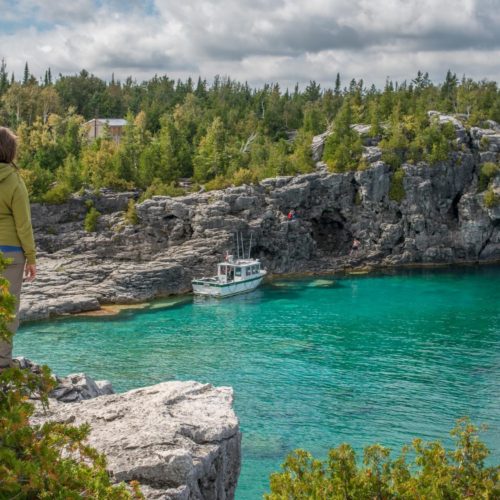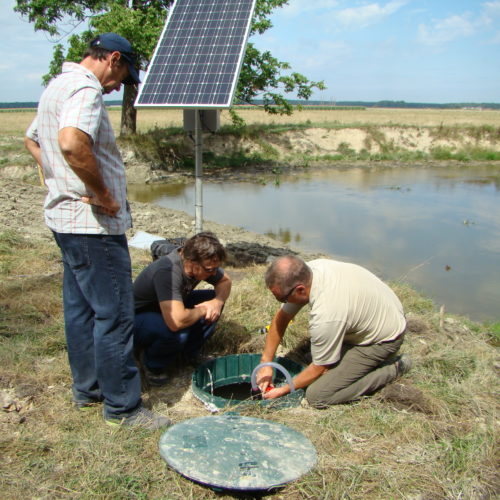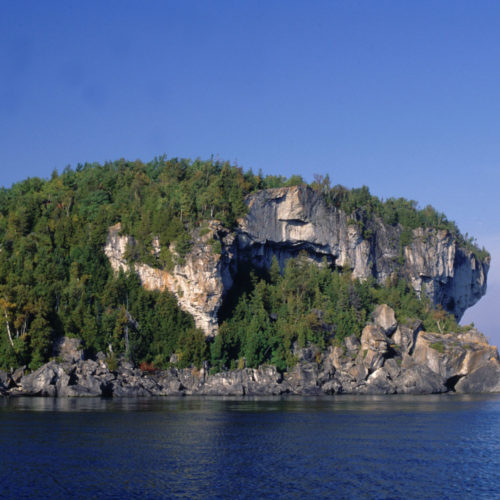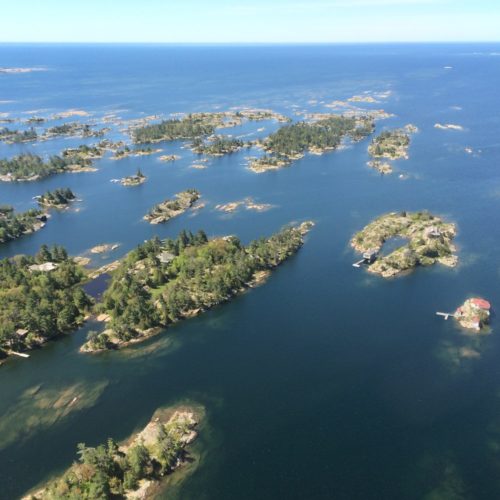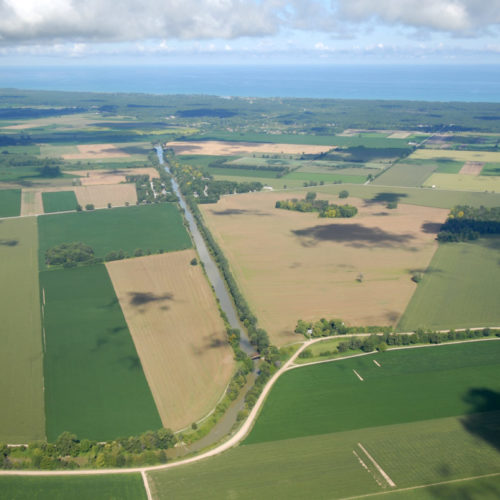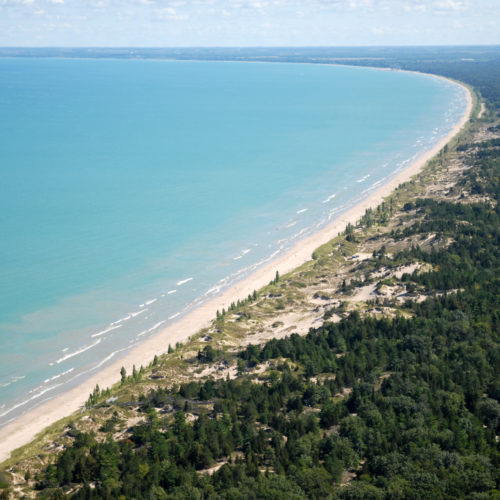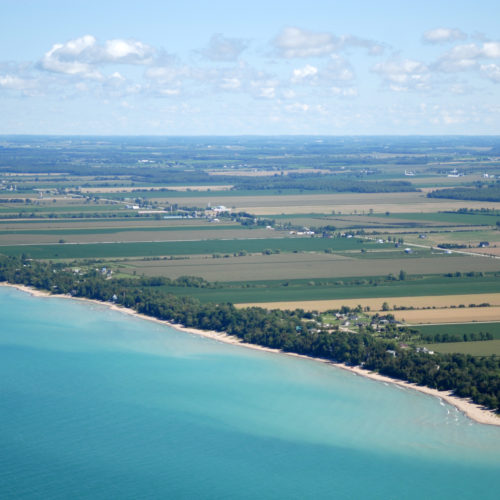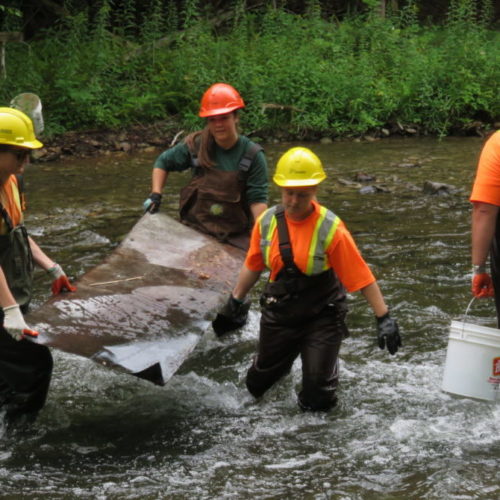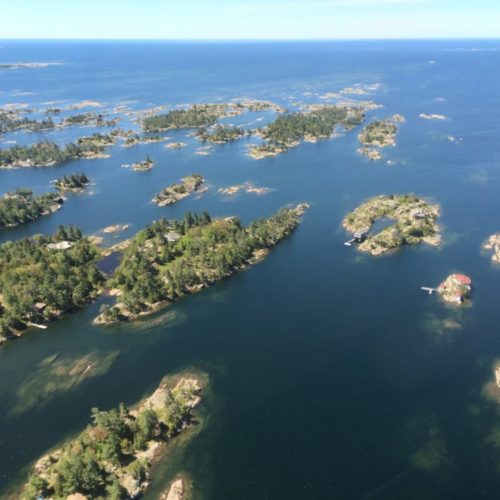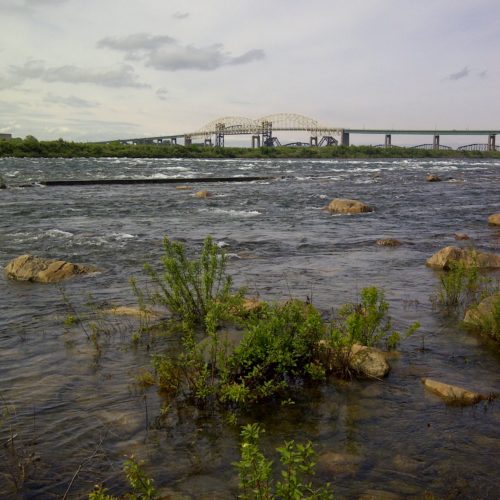Resources & Links
- Lake Huron LAMP Annual Update Archive
- 2017-2021 Lake Huron Lakewide Action and Management Plan
- 2010 Lake Huron Biodiversity Conservation Strategy
- Draft Great Lakes Nearshore Framework
- Great Lakes Information Network
- Conference Proceedings and Presentations
- State of Lake Huron Conference Proceedings 2015
- Is the Coast Clear 2012: A One-day Conference on Lake Huron’s Coastal Environment
First Nations
The Blackfly Times 2010: The Ontario Parks Newsletter
Protecting our Waters: Voices of our Elders
Teachers Forum
2011 Teachers Forum Final Report
LH Teacher Workshop Final Report and Work Plan
Fish and Wildlife
The Lake Huron watershed supports a diverse collection of native fish and wildlife. Learn more about Lake Huron fish and wildlife via the following links:
- Bird Studies Canada
Birds are fabulous environmental indicators and are important to people in many ways. Learn how Bird Studies Canada is advancing the understanding, appreciation and conservation of Canada’s wild birds and their habitats. - Environmental Objectives for Lake Huron
This 2007 report to the Great Lakes Fishery Commission details environmental objectives for fisheries management in Lake Huron, including information on accountability, implementation and draft environmental objectives for fish habitat, shoreline processes and water quality. - Ontario Trees and Shrubs
Access this site to identify and learn the diversity of species present in the Lake Ontario watershed, including trees, shrubs, wildflowers, grasses, ferns and mosses.
Mapping Sources
Follow the links below to access maps and resources for generating maps.
- Agriculture and Agri-Food Canada
Access this site to view and/or download Ontario soil surveys. - Crown Land Atlas: Access maps and regulations for Crown lands in Ontario.
- GeoGratis – Natural Resources Canada
Geo-Gratis is a portal provided by Natural Resources Canada that provides free geospatial data ranging from basic maps to highly complex GIS files. - Great Lakes Environmental Research Laboratory
Access this site to obtain various maps of Lake Huron and the Great Lakes region. - Great Lakes Information Network
Create or interact with broad scale maps of Lake Huron on Great Lakes Information Network’s Mapping and GIS portal.
Source Water Protection and Environmental Farm Plans
Source Water Protection is a function of the Government of Ontario’s Clean Water Act, which seeks to ensure clean, safe and sustainable drinking water for Ontarians through the protection of municipal drinking water sources. Under this legislation, regions of surface or ground water that supply municipal drinking water systems are identified and methodically protected through the creation of Source Protection Plans. This represents only one aspect of a multi-barrier approach to ensure that Ontario drinking water is among the best protected in the world.
Visit Conservation Ontario to learn more about Source Water Protection in the Lake Huron watershed.
Lake Huron Watershed Source Water Protection Plans
The Source Protection Plans below explain source protection procedures for the following Lake Huron basin Source Protection Regions (SPRs) and Source Protection Areas (SPAs):
- Ausable Bayfield Maitland Valley SPR
- Ausable Bayfield Source Protection Plan
- Maitland Valley Source Protection Plan
- Saugeen, Grey Sauble, Northern Bruce Peninsula SPR (includes the Saugeen Valley SPA, Grey Sauble SPA, and Northern Bruce Peninsula SPA)
- Sault Ste. Marie SPR
- South Georgian Bay – Lake Simco SPR (includes the Lakes Simcoe and Couchiching/Black River SPA, Nottawasaga Valley SPA, and Severn Sound SPA)
- Sudbury SPA
- Thames-Sydenham and St. Clair Region SPR (includes the Lower Thames Valley SPA, St. Clair Region SPA, and Upper Thames River SPA)
Water Levels
Changing water levels are of particular interest to those living along the shoreline. Depending on one’s location within the watershed, high water levels can bring greater access to nearshore areas, revive coastal wetlands and enhance various recreational activities. Contrastingly, high water levels can be a cause of concern when associated other factors, such as storms, due to potential flooding and erosion problems.
The same variation is true for lower lake levels. In some areas of the watershed, lower lake levels might pose safety concerns for boaters, increased costs for commercial ships carrying lighter loads, wetland loss, and generate water quality concerns. Other shoreline users might relish lower water levels for reduced shoreline erosion and safety from storms and wave action.
Access the following resources to learn more about past, present and possible future water levels.
- Georgian Bay Association
The Georgian Bay Association provides information on Lake Huron water levels including two videos from CBC and CNN. - Great Lakes Information Network
Access current water level information from 11 real-time water level gauging stations spread throughout Lake Huron. - Great Lakes Water Level Dashboard
Consult NOAA’s historic record of Great Lakes water dating back nearly 100 years. - 2012 Upper Great Lakes Water Levels Study
- Summary Report
- Technical Report
- Water Levels and Related Great Lakes Data
Learn about historical, recent and current Great Lakes water levels and associated causes that are influencing water level changes.
Watershed Report Cards
Many watersheds within the greater Lake Huron watershed develop and publish watershed report cards. The reports provide a general description of the health of the watershed’s lakes, watercourses and forests using a letter grade ranging from A to F. This establishes effective and transparent communication of waterbed-based environmental monitoring and public reporting.
Access the links below to view the various watershed reports cards generated by Lake Huron conservation authorities and environmental organizations:
- Ausable Bayfield Conservation Authority Report Cards
- Muskoka Watershed Report Cards
- Nottawasaga Valley Conservation Authority Report Cards
- Saugeen Valley Conservation Authority Report Cards
- St. Clair Region Conservation Authority Report Cards
- Sudbury (Nickel District) Watershed Report Cards
- Georgian Bay Forever: Vital Signs 2015
Conservation Authorities
Not sure who to contact? Visit Conservation Ontario to see a map of Ontario Conservation Authorities.
Past Conferences & Webinars
LH-GB Nearshore Webinar 2023
Presentations from the Lake Huron-Georgian Bay Nearshore Webinar held on March 30, 2023.
- Lake Huron LAMP 101
- Lake Huron Nearshore Waters Assessment: Data-informed Decision Making
- Monitoring Water Quality in the Lake Huron-Georgian Bay Nearshore
- Lake Huron Nearshore Assessment Informing Local Action
- Mapping Current and Past Shoreline Conditions
- State of the Bay Ecosystem Health Report
LH-GB Fisheries Management & Habitat Protection Webinar 2022
Presentations from the Lake Huron-Georgian Bay Fisheries Management & Habitat Protection Mini-Summit held on November 23, 2022.
- Lake Huron LAMP 101
- Canadian Baseline Coastal Habitat Survey – Lake Huron
- Changing Dynamics of the Fish Community in Lake Huron
- Aquatics Research & Conservation at Shawanaga First Nation
LH-GB Innovative Community Actions Webinar 2021
Presentations from the Lake Huron-Georgian Bay Innovative Community Actions Mini-Summit held on November 24, 2021.
- Bruce Peninsula Biosphere Association Innovative Revenue Generation
- Plastics in Georgian Bay
- Waterkeeper – Celebrating Our Sisters
LH-GB Community Engagement Webinar 2021
Presentations from the Lake Huron-Georgian Bay Community Engagement Mini-Summit held on June 22, 2021.
- Youth Engagement
- The 2020 Healthy Lake Huron #PieceofthePuzzle Social Media Campaign
- Great Lakes Water Quality: Community Contributions and Canadian-Indigenous Collaboration
- Engaging Local Government and its Leaders – They Aren’t all the Same!
Lake Huron-Georgian Bay Virtual Summit 2020
Presentations from the Lake Huron-Georgian Bay Virtual Summit held on October 27 and November 3, 2020.
Presentations from Day 1
- MECP Great Lakes Program – Lake Huron and Georgian Bay
- Lake Huron Lakewide Action and Management 2017-2021
- Success – A Measure Over Time
- Magnetawan First Nation Lands and Resources River Monitoring and Aquatic Research
- Green Ribbon Champions
Presentations from Day 2
- ICECAP – A Regional and Collaborative Climate and Energy Project in the Georgian Bay Biosphere
- Soil and Climate Change
Lake Huron Summit – October 2017
Proceedings and presentations from the Lake Huron Summit held in Collingwood, Ontario in October 2017.
Summit Synthesis, 2017
Presentations from Day 1
- The State of the Fish Community in Lake Huron
- Linking Landscape to Nearshore Water Quality
- Lake Huron Connections
- Projects around the Lake
- A Community Based Approach to Monitoring
- Aamjiwnaang – Traditional land Use Plan
- Tracking Success – Standardized Indicators
State of Lake Huron Conference November 2015
Proceedings and Presentations of a binational conference on Lake Huron’s environment held in Alpena, Michigan.
Presentations from the conference are linked through the agenda.
Meeting Agenda – NOTE: Individual presentations from the conference can be accessed by hyperlink through the Meeting Agenda.
State of Lake Huron Conference Proceedings
Draft Lake Huron Partnership Science and Monitoring Synthesis
Lake Huron-Georgian Bay Watershed Framework for Community Action Summit
Here you will find a summary of the Lake Huron- Georgian Bay Summit held in 2014. The full summary is below as well as each chapter.
Chapters:
The Summit provided an opportunity to showcase the talents and achievements of some of the community-based organizations within our watershed and provide practical ideas and approaches to help turn community interest into environmental action.
Provides opportunities to increase knowledge, integrate scientific based, traditional and local knowledge, and by providing tools to improve skills and capacity.
Supporting Community Involvement
Engaging the community in a collaborative process so that networks are formed and strengthened over time. Similar to other emerging philosophies and charters, we encourage people and groups to sign the Framework Charter.
Taking Action to Restore & Protect
Using scientific research and information, local and traditional knowledge to better understand local issues and to take action to protect unique and vulnerable ecosystems and restore degraded areas around Lake Huron.
Identifying performance indicators, measuring the success of projects and programs, and reporting the results and achievements in a public friendly manner to learn and improve future approaches.
